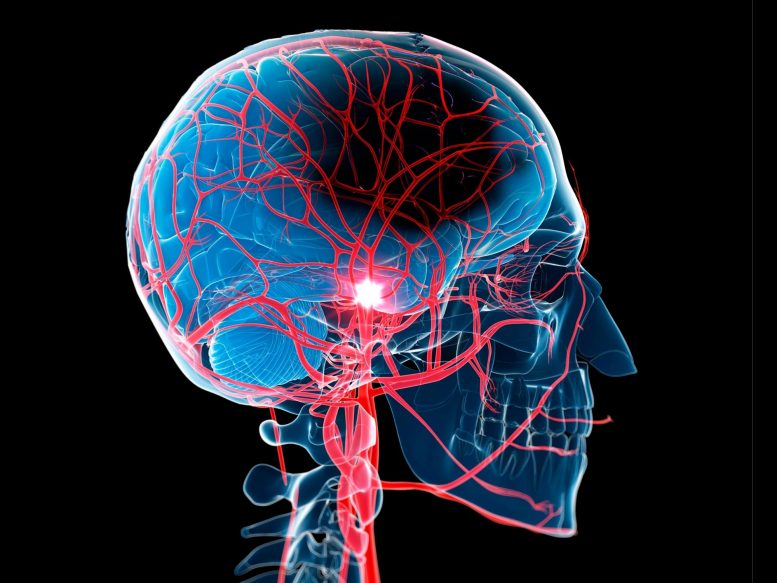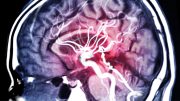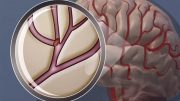
A subarachnoid hemorrhage is when bleeding occurs between the membrane that covers the brain and the space between them. This bleeding is often caused by a burst blood vessel.
The stroke affects Black people at a disproportionately high rate.
According to a study recently published in Neurology, the medical journal of the American Academy of Neurology, rates of one type of stroke called subarachnoid hemorrhage have increased in older people and men in recent years. Such strokes also occur in Black people at a disproportionately higher rate compared to people of other races and ethnicities.
A subarachnoid hemorrhage occurs when bleeding occurs in the space between the brain and the membrane that covers it, typically as a consequence of a burst blood vessel. This kind of stroke may result from an aneurysm rupture, excessive blood pressure, or trauma. For this study, researchers only looked at those that were not caused by trauma.
“Subarachnoid hemorrhages unrelated to trauma account for 5% to 10% of all strokes in the United States, and are often deadly,” said study author Fadar Oliver Otite, M.D., Sc.M., of the SUNY Upstate Medical University in Syracuse, N.Y. “Not only did we find an increase in these strokes over recent years, but we also found the incidence was disproportionally higher and increasing in Black people while rates did not increase in people of other races and ethnicities.”
Researchers identified 39,475 patients hospitalized for non-traumatic subarachnoid hemorrhage between 2007 and 2017 after reviewing state hospitalization records for New York and Florida. They then determined the yearly rates of this particular form of stroke in those states using Census data and compared those rates over time for men, women, different age groups, races, and ethnicities.
Over the course of the 10-year trial, researchers found that the average incidence of this kind of stroke for all participants was 11 cases per 100,000 people. Women had a higher rate of 13 cases per 100,000 people, while males had a lower rate of 10 cases. Age also led to an increase in incidence. Males 65 and older had an average of 22 cases per 100,000 people, compared to four cases per 100,000 for middle-aged men. Incidence grew with time, by 0.7% per year on average, with middle-aged men accounting for 1.1% of the rise, older men accounting for 2.3%, and older women accounting for 0.7%, while young women fell by 0.7%.
When looking at race and ethnicity, researchers found incidence was greater in Black people with an average of 15 cases per 100,000 people compared to non-Hispanic white people with an average of 10 cases.
Incidence increased in Black people by 1.8% per year while rates for Hispanic, Asian, and non-Hispanic white people did not change over time.
“The incidence of this type of stroke is disproportionately higher, and increasing, in Black people, leading to a widening of the racial incidence gap,” said Otite. “Previous studies have found Black people develop high blood pressure younger and are more likely to have an uncontrolled high blood pressure than non-Hispanic white people, so expanding efforts to control blood pressure may help reduce rates. The causes also likely extend to socioeconomic factors including structural racism. Tackling racial disparities will require multifaceted interventions targeted at stroke risk factors and socioeconomic inequity.”
A limitation of the study was researchers were unable to differentiate between strokes caused by aneurysms and those not caused by aneurysms, which would have provided further insight.
Reference: “Trends in the Incidence of Spontaneous Subarachnoid Hemorrhages in the United States, 2007–2017” by Christina Xia, Haydn Hoffman, Nnabuchi Anikpezie, Karan Philip, Claribel Wee, Reema Choudhry, Karen C. Albright, Hesham Masoud, Timothy Beutler, Elena Schmidt, Grahame Gould, Smit D. Patel, Emmanuel Oladele Akano, Nicholas Morris, Seemant Chaturvedi, Ehimen Aneni, Oluwatomi Lamikanra, Lawrence Chin, Julius G. Latorre and Fadar Oliver Otite, 26 October 2022, Neurology.
DOI: 10.1212/WNL.0000000000201340









Hopefully they can pinpoint and treat this defect they’ve identified in black people.
Does nobody else find this kind of racial research into ways one ethnicity or another is disproportionately flawed just kinda racist? It recalls pseudoscientific eugenicist research into the supposed inferiorities of the “untermensch”. They even intend to medically treat their “socioeconomic inequity”, so they’re poor too? If a doctor sees a black person, should anything else be assumed beyond they’re poor and about to have a stroke?
Are you an evolutionist from the neck below?
Before I answer that, are you hypothesizing that evolution has mutated black people into a new less-fit species prone to subarachnoid hemorrhage strokes, or that black people remain at an earlier stage of human evolution having failed to develop a reliable circulatory system? Bringing evolution into racial research is the foundation of eugenics. Despite 21st century euphemisms like “disproportionately affected” for “inferior” and “black” for “negroid”, 20th century history makes this kind of well-intentioned research terrifying.
Prescott, do you know what sickle-cell anemia is? It’s a disease that “disproportionately” affects black people, and for an evolutive reason. It’s a fact, not an opinion. Stop waving the “racist” card for everything you dislike.
Correlation does not equal causation. And science starts with the evidence and ends with the conclusion, not the other way around. Saying something is a likely cause (“structural racism”) when such factors were not even included in the study is not science at all.
Nonsense just nonsense. I bet not one Black person was part of the doctors, scientist of this study. Seems like every deadly disease, evolutionary change we are the most prone too. Nonsense I don’t believe a word of this obvious nonsense.
I had a stroke at the age of 9 from an aneurysm. I had my second stroke at the age if 21 from the same aneurysm. I am now 64.
I had a stroke at the age of 9 from an aneurysm. I had my second stroke at the age if 21 from the same aneurysm. I am now 64. I am a white female.